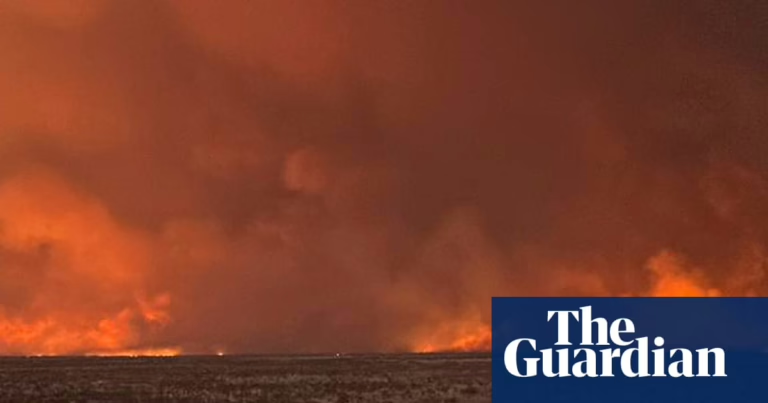Namibia’s authorities have announced that the wildfires sweeping through Etosha National Park, one of Africa’s most expansive wildlife reserves, are now under control. This update comes amid growing concerns from volunteer firefighters who highlight the absence of a coordinated national disaster response and insufficient firefighting resources.
The blaze ignited on 22 September within Etosha National Park, located in the northern region of this arid desert country. Officials suspect that nearby charcoal production activities may have triggered the fires. Etosha is renowned for its biodiversity, sheltering 114 mammal species, including the critically endangered black rhinoceros.
By Saturday, the government had mobilized 49 soldiers to assist in firefighting efforts, with plans to deploy an additional 500 personnel the following day. Reports indicate that over 775,000 hectares-approximately one-third of the park’s territory-have been scorched, alongside another 171,000 hectares outside the park boundaries.
Prime Minister Tjitunga Elijah Ngurare shared an update on his Facebook page Monday morning, confirming that all fires were contained, though mop-up operations and monitoring were ongoing. He identified ten distinct fire sites within the region.
Elephants quenching their thirst at a waterhole in Etosha National Park, Namibia, on 23 September.
Despite official statements, Sean Naude, head of the Namibian Marshall Rangers-a volunteer rescue organization-reported that at least four fires remain active. He noted, “While the fires inside the park are largely contained, they are not fully extinguished. Fires spreading beyond the park’s borders continue unchecked, though much of the park’s vegetation has already been consumed.”
Naude also criticized the delayed collaboration between government agencies and civilian groups, questioning why assistance from volunteers was only accepted after five days and why military involvement was postponed until the fourth day of the crisis.
Frank Stein, owner of Bay Air Aviation, a medical air ambulance service, conducted aerial reconnaissance using a Cessna plane and helicopter over the weekend. His flights aimed to assist local farmers striving to prevent the fires from advancing further south onto their properties.
Stein remarked, “Although reports mention the Namibian Defence Force’s involvement, I did not observe their presence on the ground. Instead, I saw roughly 50 farmers from various groups battling the flames with what I would describe as severely inadequate equipment.”
According to the Ministry of Environment, Forestry and Tourism, the wildfire in Etosha National Park has resulted in the deaths of nine antelopes and has spread into communal lands within the Oshana and Omusati regions.
The wildfire as seen on Sunday.
Stein added that the government has recently requested proposals from his company and others to assist in firefighting efforts. He lamented, “Emergency responses often come too late-once the crisis is declared, everyone is eager to fund solutions, but by then, the opportunity for effective large-scale intervention has passed.”
Earlier Monday, the prime minister expressed gratitude toward private sector contributors via Facebook, urging collaboration between government and businesses. He emphasized the importance of unity and discouraged unproductive blame-shifting, affirming that government resources have been allocated to contain the fires.
The authorities confirmed one reported elephant death, though it remains unverified, alongside nine antelope fatalities and the rescue of a pangolin affected by the blaze.
Etosha National Park’s hallmark is the vast, ancient salt pan stretching approximately 80 miles in length and 30 miles in width. This natural spectacle attracts large flocks of flamingos during the rainy season, which typically begins in October or November, drawing tourists from around the world.



















